Nitarshan Rajkumar
Infrastructure for AI Agents
Jan 17, 2025



Abstract:Increasingly many AI systems can plan and execute interactions in open-ended environments, such as making phone calls or buying online goods. As developers grow the space of tasks that such AI agents can accomplish, we will need tools both to unlock their benefits and manage their risks. Current tools are largely insufficient because they are not designed to shape how agents interact with existing institutions (e.g., legal and economic systems) or actors (e.g., digital service providers, humans, other AI agents). For example, alignment techniques by nature do not assure counterparties that some human will be held accountable when a user instructs an agent to perform an illegal action. To fill this gap, we propose the concept of agent infrastructure: technical systems and shared protocols external to agents that are designed to mediate and influence their interactions with and impacts on their environments. Agent infrastructure comprises both new tools and reconfigurations or extensions of existing tools. For example, to facilitate accountability, protocols that tie users to agents could build upon existing systems for user authentication, such as OpenID. Just as the Internet relies on infrastructure like HTTPS, we argue that agent infrastructure will be similarly indispensable to ecosystems of agents. We identify three functions for agent infrastructure: 1) attributing actions, properties, and other information to specific agents, their users, or other actors; 2) shaping agents' interactions; and 3) detecting and remedying harmful actions from agents. We propose infrastructure that could help achieve each function, explaining use cases, adoption, limitations, and open questions. Making progress on agent infrastructure can prepare society for the adoption of more advanced agents.
IDs for AI Systems
Jun 17, 2024



Abstract:AI systems are increasingly pervasive, yet information needed to decide whether and how to engage with them may not exist or be accessible. A user may not be able to verify whether a system satisfies certain safety standards. An investigator may not know whom to investigate when a system causes an incident. A platform may find it difficult to penalize repeated negative interactions with the same system. Across a number of domains, IDs address analogous problems by identifying \textit{particular} entities (e.g., a particular Boeing 747) and providing information about other entities of the same class (e.g., some or all Boeing 747s). We propose a framework in which IDs are ascribed to \textbf{instances} of AI systems (e.g., a particular chat session with Claude 3), and associated information is accessible to parties seeking to interact with that system. We characterize IDs for AI systems, argue that there could be significant demand for IDs from key actors, analyze how those actors could incentivize ID adoption, explore potential implementations of our framework, and highlight limitations and risks. IDs seem most warranted in high-stakes settings, where certain actors (e.g., those that enable AI systems to make financial transactions) could experiment with incentives for ID use. Deployers of AI systems could experiment with developing ID implementations. With further study, IDs could help to manage a world where AI systems pervade society.
Visibility into AI Agents
Feb 04, 2024

Abstract:Increased delegation of commercial, scientific, governmental, and personal activities to AI agents -- systems capable of pursuing complex goals with limited supervision -- may exacerbate existing societal risks and introduce new risks. Understanding and mitigating these risks involves critically evaluating existing governance structures, revising and adapting these structures where needed, and ensuring accountability of key stakeholders. Information about where, why, how, and by whom certain AI agents are used, which we refer to as visibility, is critical to these objectives. In this paper, we assess three categories of measures to increase visibility into AI agents: agent identifiers, real-time monitoring, and activity logging. For each, we outline potential implementations that vary in intrusiveness and informativeness. We analyze how the measures apply across a spectrum of centralized through decentralized deployment contexts, accounting for various actors in the supply chain including hardware and software service providers. Finally, we discuss the implications of our measures for privacy and concentration of power. Further work into understanding the measures and mitigating their negative impacts can help to build a foundation for the governance of AI agents.
Metadata Archaeology: Unearthing Data Subsets by Leveraging Training Dynamics
Sep 20, 2022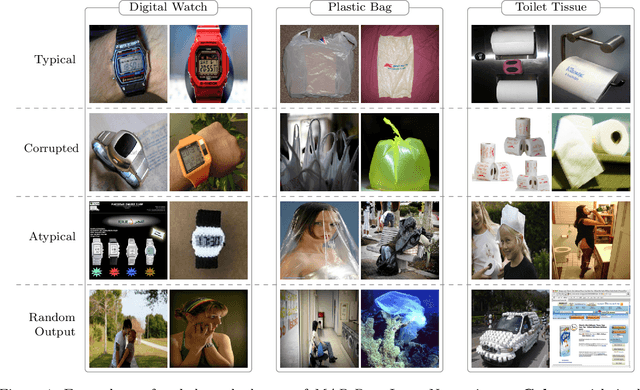

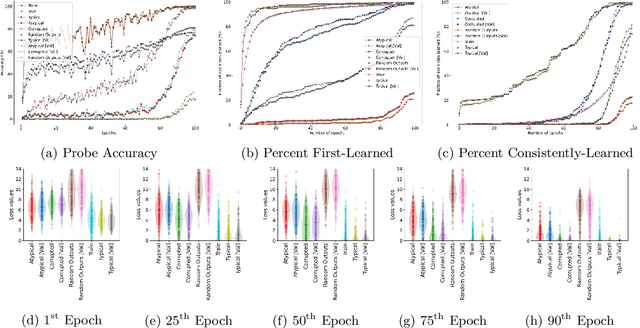
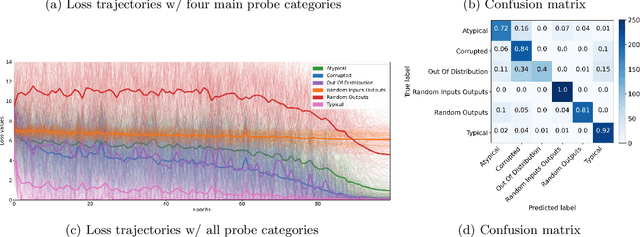
Abstract:Modern machine learning research relies on relatively few carefully curated datasets. Even in these datasets, and typically in `untidy' or raw data, practitioners are faced with significant issues of data quality and diversity which can be prohibitively labor intensive to address. Existing methods for dealing with these challenges tend to make strong assumptions about the particular issues at play, and often require a priori knowledge or metadata such as domain labels. Our work is orthogonal to these methods: we instead focus on providing a unified and efficient framework for Metadata Archaeology -- uncovering and inferring metadata of examples in a dataset. We curate different subsets of data that might exist in a dataset (e.g. mislabeled, atypical, or out-of-distribution examples) using simple transformations, and leverage differences in learning dynamics between these probe suites to infer metadata of interest. Our method is on par with far more sophisticated mitigation methods across different tasks: identifying and correcting mislabeled examples, classifying minority-group samples, prioritizing points relevant for training and enabling scalable human auditing of relevant examples.
Evaluating the Text-to-SQL Capabilities of Large Language Models
Mar 15, 2022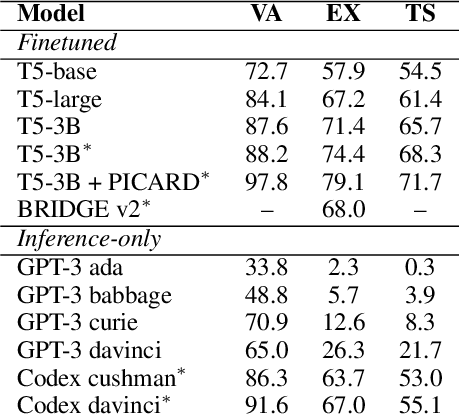
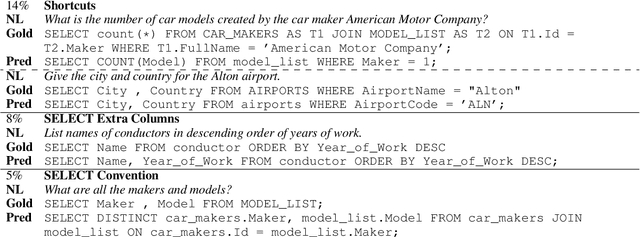
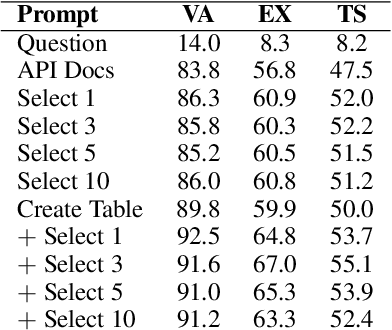
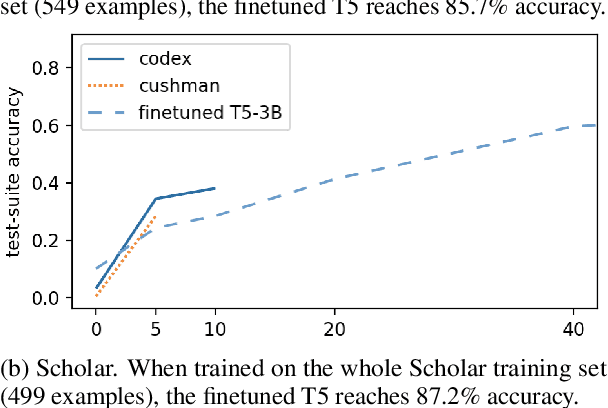
Abstract:We perform an empirical evaluation of Text-to-SQL capabilities of the Codex language model. We find that, without any finetuning, Codex is a strong baseline on the Spider benchmark; we also analyze the failure modes of Codex in this setting. Furthermore, we demonstrate on the GeoQuery and Scholar benchmarks that a small number of in-domain examples provided in the prompt enables Codex to perform better than state-of-the-art models finetuned on such few-shot examples.
Myriad: a real-world testbed to bridge trajectory optimization and deep learning
Feb 22, 2022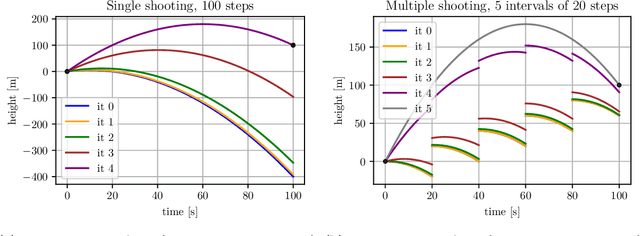
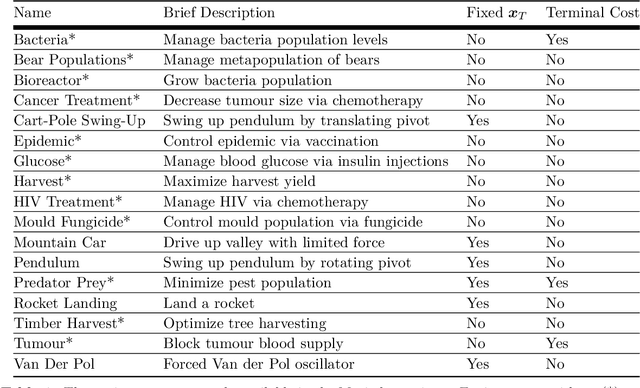
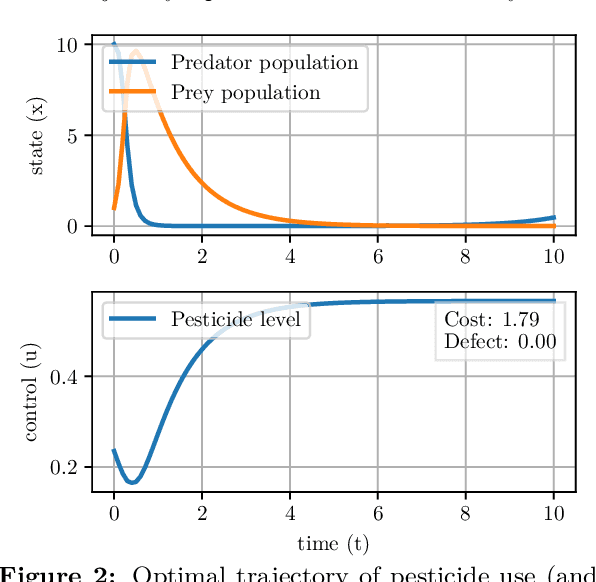

Abstract:We present Myriad, a testbed written in JAX for learning and planning in real-world continuous environments. The primary contributions of Myriad are threefold. First, Myriad provides machine learning practitioners access to trajectory optimization techniques for application within a typical automatic differentiation workflow. Second, Myriad presents many real-world optimal control problems, ranging from biology to medicine to engineering, for use by the machine learning community. Formulated in continuous space and time, these environments retain some of the complexity of real-world systems often abstracted away by standard benchmarks. As such, Myriad strives to serve as a stepping stone towards application of modern machine learning techniques for impactful real-world tasks. Finally, we use the Myriad repository to showcase a novel approach for learning and control tasks. Trained in a fully end-to-end fashion, our model leverages an implicit planning module over neural ordinary differential equations, enabling simultaneous learning and planning with complex environment dynamics.
Pretraining Representations for Data-Efficient Reinforcement Learning
Jun 09, 2021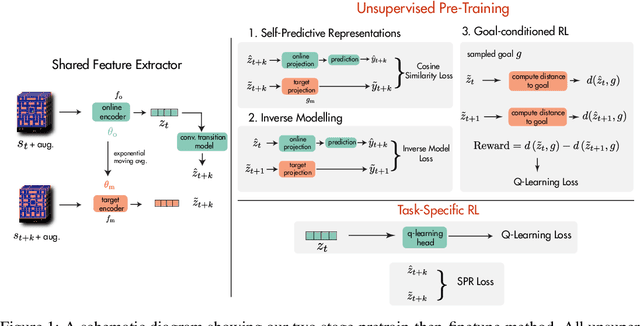
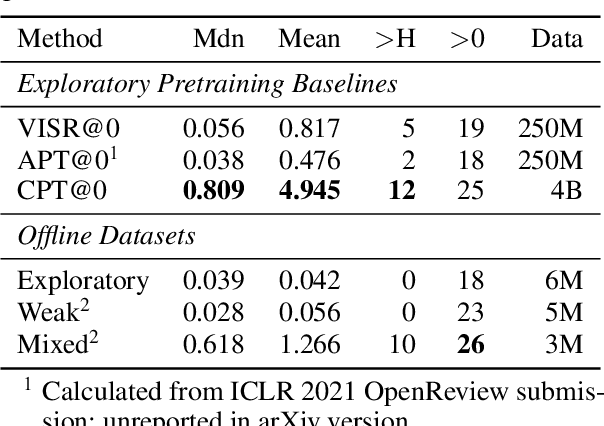
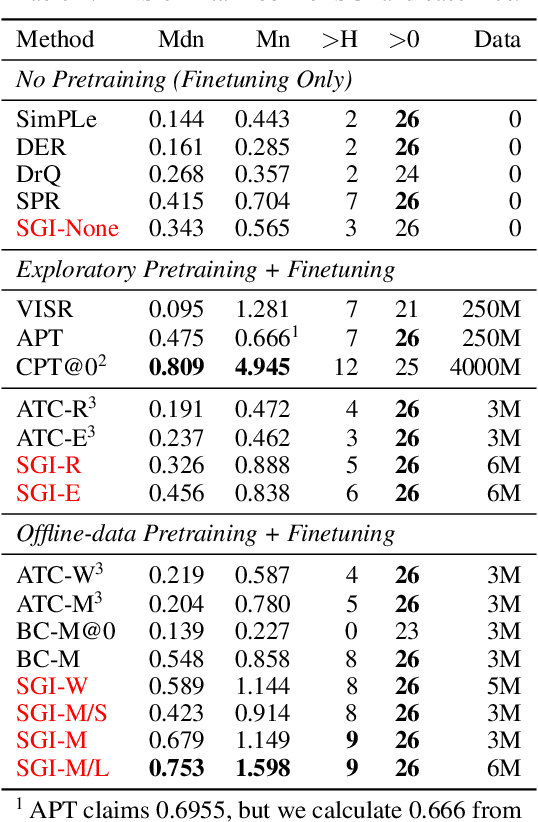
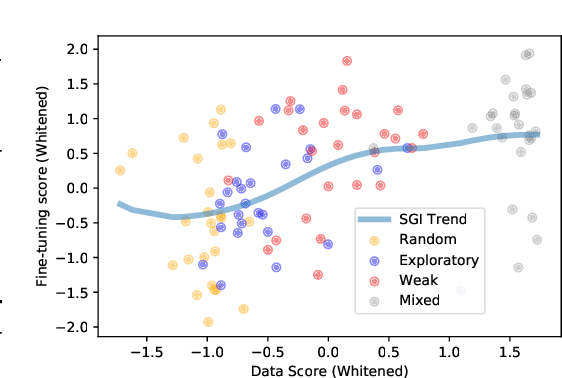
Abstract:Data efficiency is a key challenge for deep reinforcement learning. We address this problem by using unlabeled data to pretrain an encoder which is then finetuned on a small amount of task-specific data. To encourage learning representations which capture diverse aspects of the underlying MDP, we employ a combination of latent dynamics modelling and unsupervised goal-conditioned RL. When limited to 100k steps of interaction on Atari games (equivalent to two hours of human experience), our approach significantly surpasses prior work combining offline representation pretraining with task-specific finetuning, and compares favourably with other pretraining methods that require orders of magnitude more data. Our approach shows particular promise when combined with larger models as well as more diverse, task-aligned observational data -- approaching human-level performance and data-efficiency on Atari in our best setting. We provide code associated with this work at https://github.com/mila-iqia/SGI.
In Search of Robust Measures of Generalization
Oct 22, 2020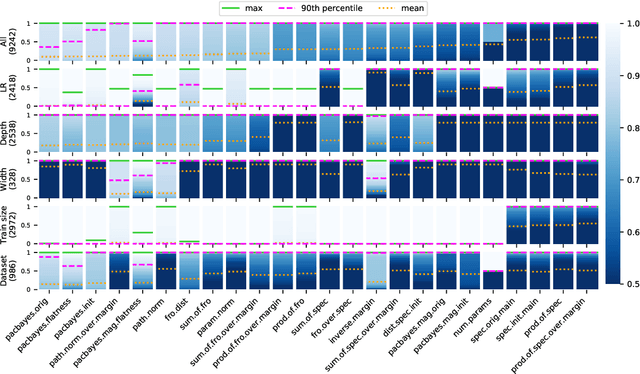
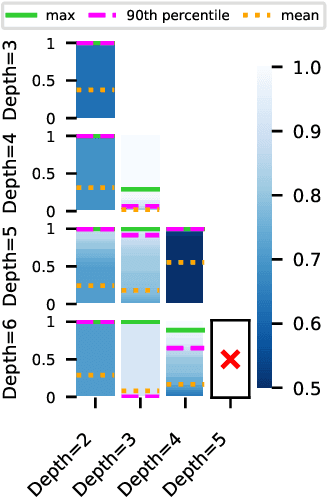
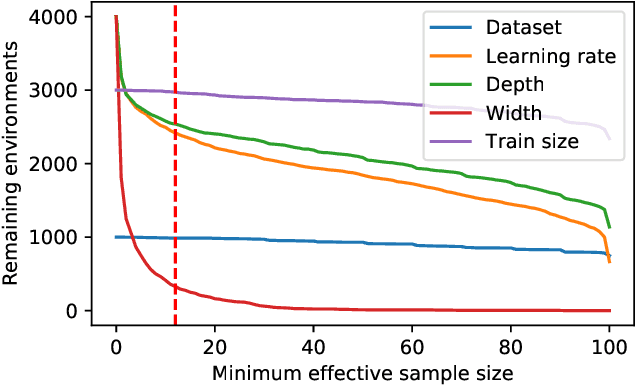
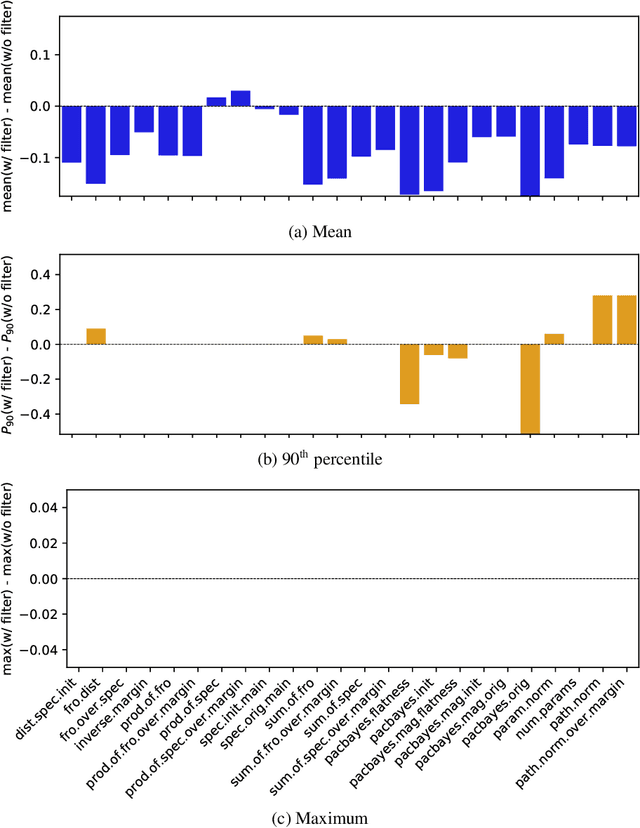
Abstract:One of the principal scientific challenges in deep learning is explaining generalization, i.e., why the particular way the community now trains networks to achieve small training error also leads to small error on held-out data from the same population. It is widely appreciated that some worst-case theories -- such as those based on the VC dimension of the class of predictors induced by modern neural network architectures -- are unable to explain empirical performance. A large volume of work aims to close this gap, primarily by developing bounds on generalization error, optimization error, and excess risk. When evaluated empirically, however, most of these bounds are numerically vacuous. Focusing on generalization bounds, this work addresses the question of how to evaluate such bounds empirically. Jiang et al. (2020) recently described a large-scale empirical study aimed at uncovering potential causal relationships between bounds/measures and generalization. Building on their study, we highlight where their proposed methods can obscure failures and successes of generalization measures in explaining generalization. We argue that generalization measures should instead be evaluated within the framework of distributional robustness.
 Add to Chrome
Add to Chrome Add to Firefox
Add to Firefox Add to Edge
Add to Edge